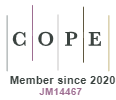The Brazilian and Australian political-institutional scenario concerning water resources management
DOI:
https://doi.org/10.5585/2025.25216Keywords:
water security, sustainable water resources management, stakeholders’ participation, institutional analysis, regional and urban managementAbstract
Aim: This research aims to analytically compare the functioning of the institutional procedures concerning water resources management in Brazil and Australia.
Method: Through a literature review and document analysis, this paper presents a characterization of the Brazilian and Australian political-institutional water management scenarios based on both direct and indirect information sources. It then compares the institutional processes of these two countries using a SWOT matrix analysis, highlighting their strengths, weaknesses, opportunities, and threats.
Novelty/Relevance: This research seeks to fill a scientific information gap by examining how actors in both developing and developed countries' influence decision-making toward more sustainable environmental management, using water management as a case study.
Results: The results show that both countries have legislation prescribing decentralized and participatory decision-making processes. However, the implementation of this legislation does not guarantee democratic management of hydric resources. Moreover, the stages and scopes of legislative implementation and execution differ between Brazil and Australia. The Brazilian institutional scenario demonstrates a weaker capacity for implementing and enforcing water legislation compared to Australia, where a more developed water management system exists, and society shows greater willingness to proactively engage in management.
Social/management contributions: This diagnostic approach can help examine other environmental management scenarios by presenting institutional patterns within a given territory and demonstrating the causalities that may lead to states having varying levels of capacity.
Downloads
References
Australia. Department of Climate Change, Energy, the Environment and Water. (2022a, 9 December). National water policy. https://www.dcceew.gov.au/water/policy/policy
Australia. Department of Climate Change, Energy, the Environment and Water. (2021, 03 October). Outback Australia - the rangelands. https://www.dcceew.gov.au/environment/land/rangelands
Australia. Department of Climate Change, Energy, the Environment and Water. (2022b, 11 October). Australian water markets. https://www.dcceew.gov.au/water/policy/markets
Australian National Audit Office. Department of Sustainability, Environment, Water, Population and Communities. Commonwealth Environmental Water Holder. (2011). Restoring the Balance in the Murray-Darling Basin. Audit Report No.27 2010–11. ISSN 1036–7632. Commonwealth of Australia.
Barbosa, M. C., Mushtaq, S., & Alam, K. (2017). Integrated water resources management: Are river basin committees in Brazil enabling effective stakeholder interaction? Environmental Science and Policy, 76, pp. 1–11.
Bowen, G. A. (2009). Document Analysis as a Qualitative Research Method. Qualitative Research Journal, 9(2), 27 – 40. http://dx.doi.org/10.3316/QRJ0902027
Bureau of Meteorology. (2015, April). Recent rainfall, drought, and southern Australia's long-term rainfall decline. http://www.bom.gov.au/climate/updates/articles/a010-southern-rainfall-decline.html
Bureau of Meteorology. (2020). National performance report 2018–19: urban water utilities, part A. Bureau of Meteorology. http://www.bom.gov.au/water/npr/docs/2018-19/National_Performance_Report_2018-19_urban_water_utilities_updated.pdf
Cardoso, M. L. M. (2003). A Democracia das Águas na sua Prática: O caso dos Comitês de Bacias Hidrográficas de Minas Gerais [Doctoral Dissertation, Universidade Federal do Rio de Janeiro]. Busca Integrada UFRJ.
Carvalho Júnior, M. R. (2007). O Interesse popular na gestão dos recursos hídricos sob a ótica do desenvolvimento sustentável: o caso da bacia do rio Belém em Curitiba – PR [Master’s Thesis, Pontifícia Universidade Católica do Paraná]. PUCPR Repository.
Carvalho, D. M., & van Tulder, R. (2022, 27 May). Water and Sanitation as a Wicked Governance Problem in Brazil: An Institutional Approach. Frontiers in Water, 4, 1-20. https://doi.org/10.3389/frwa.2022.781638
Commonwealth of Australia. (2015). Our North, Our Future: White Paper on Developing Northern Australia. https://www.infrastructure.gov.au/sites/default/files/documents/nawp-fullreport.docx
Costa, M. L. M., Silva, T. C., & Limeira, M. C. M. (2021). Investigação sobre as relações interinstitucionais e interdisciplinares para o planejamento integrado de recursos hídricos na bacia hidrográfica do Rio Gramame, Brasil. Eng. Sanit. Ambient., 26(2), 291-299. https://doi.org/10.1590/S1413-415220190119
Delany-Crowe, T., Marinova, D., Fisher, M., Mcgreevy, M., & Baum, F. (2019). Australian policies on water management and climate change: are they supporting the sustainable development goals and improved health and well-being? Globalization and Health, 15(68), 1-15. https://doi.org/10.1186/s12992-019-0509-3
Doolan, J., & Hart, B. T. (2017). Water resource policy, planning, and management in Australia—an overview. In Doolan, j.; Hart, b. T. (Eds.), Decision Making in Water Resources Policy and Management: An Australian Perspective (pp. 3-19). Springer. https://doi.org/10.1016/B978-0-12-810523-8.00002-1
Evans, P. (1993). O Estado como problema e solução. Lua Nova: Revista de Cultura e Política, 28-29, 107-157. https://doi.org/10.1590/S0102-64451993000100006
Fracalanza, A. P., Jacob, A. M., & Eça, R. F. (2013). Environmental justice and water resources governance practices: re-introducing issues of equality to the agenda. Ambiente & Sociedade, 16(1), 19-36.
Hannam, P. (2015, 13 May). Parched NSW seeks help as National Water Commission axed. The Sidney Morning Herald. https://www.smh.com.au/environment/parched-nsw-seeks-help-as-national-water-commission-axed-20150513-gh0ork.html
Hodgson, G. M. (2006). What Are Institutions? Journal of Economic Issues, XL(1),1-25. https://doi.org/10.1080/00213624.2006.11506879
Holley, C., & Sinclair, Darren (Orgs.). (2018). Reforming Water Law and Governance. From Stagnation to Innovation in Australia. 1 ed. Springer Nature Singapore Pte Ltd. https://doi.org/10.1007/978-981-10-8977-0
Horne, J. (2017, 15 December). Political commitment to the Basin Plan is long overdue. Asia & the Pacific Policy Society. http://www.policyforum.net/low-water-mark-murray-darling-basin/
Horne, J., & Grafton, R. Q. (2019) The Australian water markets story: Incremental transformation. Luetjens, J., Mintrom, M., & Hart, P. (Eds.), Successful Public Policy: Lessons from Australia and New Zealand (chap. 7). ANU Press. https://www.jstor.org/stable/j.ctvh4zj6k
Jackson, S. E., Tan, P., & Altman, J. (2009, March) Indigenous freshwater planning forum: Proceedings, outcomes, and recommendations. Australian Government.
Jacobi, P. R. (2005) Comitês de Bacias Hidrográficas: o que está em jogo na gestão compartilhada e participativa. Dowbor, L., & Tagnin, R. A. (Org.). Administrando a água como se fosse importante: Gestão ambiental e sustentabilidade. São Paulo: Ed. Senac São Paulo
Krysanova, V., Dickens, C., Timmerman, J., Varela-Ortega, C., Schlüter, M.,·Roest, K., Huntjens, P.,·Jaspers, F., Buiteveld, H., Moreno, E., Carrera, J. P., Slámová, R., Martínková, M., Blanco, I., Esteve, P., Pringle, K. Pahl-Wostl, C., &·Kabat, P. (2010). Cross-Comparison of Climate Change Adaptation Strategies Across Large River Basins in Europe, Africa and Asia. Water Resour Manage, 24, 4121–4160. https://doi.org/10.1007/s11269-010-9650-8
Lindsay, B. (2018). Public Participation in Water Resources Management in Australia: Procedure and Possibilities. Holley, C., & Sinclair, D. (Orgs.). Reforming Water Law and Governance: From Stagnation to Innovation in Australia. 1 ed. Springer Nature Singapore Pte Ltd. https://doi.org/10.1007/978-981-10-8977-0
Malheiros, T. F., Prota, M. G., Rincón, M., & Perez, A. (2013). Participação comunitária e implementação dos instrumentos de gestão da água em bacias hidrográficas. Revista Ambiente & Água, 8(1), 98-118. https://doi.org/10.4136/ambi-agua.970
Matthews, K. (2017, December). Independent investigation into NSW water management and compliance – Final Report. NSW Department of Industry. http://www.industry.nsw.gov.au/__data/assets/pdf_file/0019/131905/Matthews-final-report-NSW-water-management-and-compliance.pdf
Mesquita, L. F. G. (2018) Os comitês de bacias hidrográficas e o gerenciamento integrado na Política Nacional de Recursos Hídricos. Desenvolvimento e Meio Ambiente, 45, 56-80. https://doi.org/10.5380/dma.v45i0.47280
Murray‒Darling Basin Authority (2017). The Murray–Darling Basin Water Compliance Review. MDBA publication. https://www.mdba.gov.au/sites/default/files/pubs/MDB-Compliance-Review-Final-Report.pdf
Mylopoulos, Y., Kolokytha, E., Kampragou, E. , & Vagiona, D. (2008). A Combined Methodology for Transboundary River Basin Management in Europe. Application in The Nestos–Mesta Catchment Area. Water Resour Manage, 22, 1101–1112. https://doi.org/10.1007/s11269-007-9214-8
National Water Resources and Basic Sanitation Agency. (2016). Lei das Águas. Módulo 3: Instrumentos da Política Nacional de Recursos Hídricos. http://dspace.agencia.gov.br:8080/conhecerhana/3202
National Water Resources and Basic Sanitation Agency. (2022). Dados Abertos da Agência Nacional de Águas e Saneamento Básico. Dados Abertos para a Gestão de Recursos Hídricos. https://dadosabertos.ana.gov.br/
Organisation for Economic Co-operation and Development. (2015). Water Resources Governance in Brazil. OECD Studies on Water, OECD Publishing. http://dx.doi.org/10.1787/9789264238121-en
Parliament of Australia. (2014, 25 Nov.). National Water Commission (Abolition) Bill 2014. Bills Digest no. 54 2014–15. https://www.aph.gov.au/Parliamentary_Business/Bills_Legislation/bd/bd1415a/15bd054
Rother, E. T. (2007). Systematic Literature Review X Narrative Review [Editorial]. Acta Paul Enferm., 20(2), vii. https://doi.org/10.1590/S0103-21002007000200001
Sousa Júnior, W., Baldwin, C., Camkin, J., Fidelman, P., Silva, O. S., Neto, S., & Smith, T. F. (2016). Water: Drought, Crisis, and Governance in Australia and Brazil. Water, 8(11), 493, 1-21. https://doi.org/10.3390/w8110493
Sousa Júnior, Wilson Cabral. (2004). Gestão das águas no Brasil: reflexões, diagnósticos e desafios. Instituto internacional de Educação do Brasil. São Paulo: Peirópolis.
South Australia. Department for Environment and Water. (2022). Legislation, agreements and policy. https://www.environment.sa.gov.au/topics/water/water-legislation-agreements-policy
State Water and Land Institute (2022). Legislação. https://www.iat.pr.gov.br/Pagina/Legislacao
Trindade, L. L., & Scheibe, L. F. (2019). Water management: constraints to and contributions of Brazilian watershed management committees. Ambiente & Sociedade, 22, 1-20. https://doi.org/10.1590/1809-4422asoc20160267r2vu2019L2AO
United Nations Development Programme. (2024). Breaking the gridlock: Reimagining cooperation in a polarized world. The 2023/2024 Human Development Report. UNDP: New York, USA. https://hdr.undp.org/system/files/documents/global-report-document/hdr2023-24reporten.pdf
United Nations Water (2022). SDG Data Portal. https://sdg6data.org/en/snapshots?country=#demo-wrapper
Vic Catchments. (2022). Our CMA Regions. https://viccatchments.com.au/about-us/our-cma-regions/
Downloads
Published
How to Cite
Issue
Section
License
Copyright (c) 2025 Nicole Santos Accioly, Harry Alberto Bollmann, Robert Faggian, Victor Sposito

This work is licensed under a Creative Commons Attribution-NonCommercial-ShareAlike 4.0 International License.
- Abstract 420
- pdf 146
- pdf (Português (Brasil)) 224











